As the name suggests, we can expect to feel “compression” while wearing compression socks. Yet it can be difficult to know just how tight is the right amount of tight.
Understanding what pressure rating is recommended for your goal can give you the peace of mind that you are wearing the right socks.
What Are Compression Socks?
Before we explore how to find the best type of compression garment for you, let’s get the basics out of the way.
A compression sock is an elastic garment that looks similar to a trouser sock or regular pantyhose, but it fits tighter than both. These socks compress a person’s feet, ankles and lower legs. Physicians often recommend the socks for medical purposes. Some people also wear them for cosmetic reasons, mostly to reduce the visibility of varicose veins.
The socks force blood to circulate through narrower pathways. They compress a person’s surface veins. The arteries and muscles will also be slightly compressed by wearing compression socks. This causes more blood to flow to the heart. As a result, less blood collects below the ankles.
How Tight Should It Be
How tight should compression socks be?
Compression socks come in various levels of pressure. Millimeters of mercury (mmHg) is used to measure pressure, and it’s the same unit of measure used to classify compression socks. You’ll be able to choose from compression socks with 8mmHg all the way up to 40mmHg.
Your compression socks should fit snugly. However, if you experience any of the following, try a lower compression level:
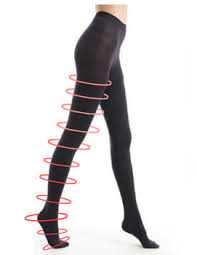
- You have pain in the legs, feet or ankles.
- Your skin feels pinched by the socks.
- You experience numbness in your legs or feet.
- Your skin becomes discolored.
As a general rule, if the sock fits painfully tight, then you’ll need to choose a different size. ComproGear makes sizes all the way up to plus size compression socks.
Types
Gradient socks and anti-embolism socks are two common varieties of compression garments. Gradient socks are designed for increased blood flow in a person’s veins. They fit tightly at the ankle and are made to gradually loosen the higher they go up a person’s leg.
Gradient socks can also help patients with various health issues, such as the following:
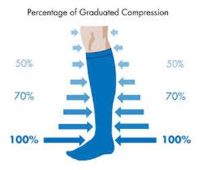
- Blood clots
- Pain from walking or sitting for long periods (See article: What are the best compression socks for sitting all day for office workers?)
- Poor blood circulation
Anti-embolism socks are similar to gradient socks. However, anti-embolism socks are most often prescribed to patients who are bedridden. Many of these patients are immobile or recovering from surgery. Overall, anti-embolism socks are designed to lower the risk of developing blood clots in people with limited mobility.
Choosing the Right Pair
First, avoid “one size fits all” scams like the Dr Knee Soothers scam. Make sure the compression socks you buy have a size.
Choose a pressure level based on what you want to wear your compression socks for.
See Also: Best Compression Socks For Elderly?
Are you experiencing symptoms? Do you have a medical diagnosis? You can follow this guide to help you choose your level of compression:
Mild Compression
The mildest level for compression is 8-15 mmHg. This pressure level is not recommended to treat any serious disorder of the legs or veins. The 8-15 compression level can be purchased over-the-counter without a prescription.
This mild compression level is commonly used for the following:
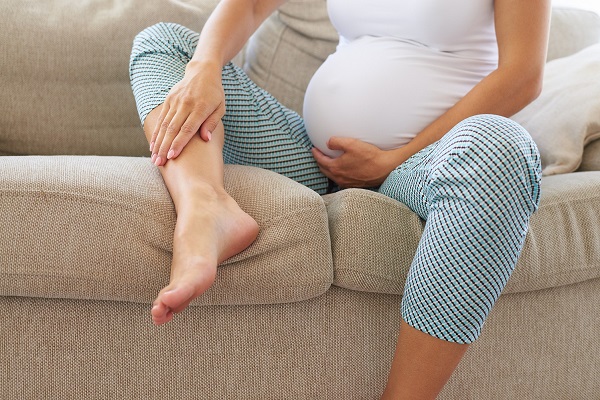
- Helps relieve tired legs in persons who sit or stand for long time.
- Relieves minor swelling in legs, feet and ankles.
- Helps relieve aches and pains in persons who have heavy or tired legs.
- Helps prevent spider veins and varicose veins in pregnant women.
Moderate Compression
15-20 mmHg
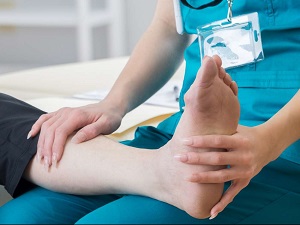
The next pressure level is 15-20 mmHg. This level is considered moderate, and it’s used to treat the same issues that the mildest level socks are used for.
However, this moderate level can also treat slightly more severe problems related to leg fatigue, aches and pains.
The moderate pressure category is also considered the ideal pressure for treating leg issues in people who travel long distances. For instance, pilots and flight attendants might choose moderate level compression hosiery or socks. They could wear them to prevent blood clots that form as a result of sitting or standing for extended periods of time.
20-30 mmHg
The next compression range is 20-30 mmHg. These are often called “20-30 mmHg Medical Grade Compression Socks“. This compression level can help treat or prevent the following conditions:
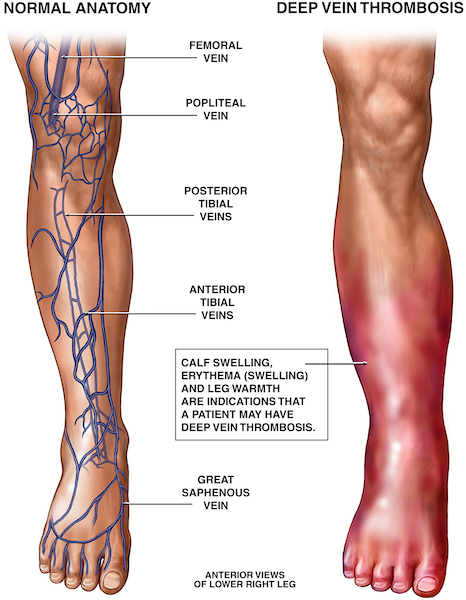
- Moderate to severe varicose veins.
- Moderate to severe lymphatic edema.
- Ulcers.
- Post-thrombotic syndrome.
- Orthostatic hypotension.
- Superficial thrombophlebitis.
Some people find 20-30 mmHg to be gout friendly socks.
30-40 mmHg
The next compression level is 30-40 mmHg. Compression sleeves at this level are used to treat severe cases of varicose veins, lymphedema and edema. Some patients also choose this category to treat venous ulcers.
Extra Firm Compression
40-50 mmHg extra firm compression socks
The last category of compression is 40-50 mmHg, and it is classified as extra firm. Compression hosiery and socks in this last category are generally only used to treat serious venous conditions. For instance, some patients wear this level of compression sock to treat acute swelling in the legs or ankles.
Chronic vein insufficiency and DVT are also treated with this extra firm sock. This sock is generally purchased with a prescription from a physician.

There are some rules of thumb to consider when choosing a compression level. For example, a mild level compression with a lower mmHg number is good for people who simply want to reduce leg pain or stay comfy on days when they walk a lot. To treat or prevent a condition like deep vein thrombosis, you will need a tighter sock that applies more pressure.
Other Popular Articles on ComproGear
Rose Toy I tried the rose sex toy TikTok loves – this is what it’s like
Purchasing the Right Compression Level
If your physician recommends a compression garment, he or she will advise you on the size and tightness. The physician will measure your ankle, calf and thigh. The distance from your thigh or knee to the ground will also be measured depending on the length of sock you need. At times, the staff at the medical supply store will measure your leg instead of the doctor.

Some people choose to purchase the socks on their own without a prescription. Athletes can benefit from compression socks during athletic performance, but they do not need a prescription to acquire 20-30mmHg pressure hose. Other people purchase the socks over-the-counter without a prescription for cosmetic reasons, such as improving the look of varicose veins.
Compression Socks vs. Compression Stockings
- You have several options. You may purchase a knee-high sock that stops below your knees. These socks are designed to stop below the place where your knees bend.
- Or, you could choose a thigh-high socks that covers the entire leg. This sock stops at the top of the thigh. Such socks are made to improve blood circulation in your entire leg.

- Your third option is pantyhose. These socks are worn waist-high. The men’s version looks like a leotard. These socks cover the legs and a portion of the torso. The design is made to draw swelling out of the legs.
- When choosing between waist-high and thigh-high socks, make the decision based on what you need the compression for. If you’re purchasing compression garments for swelling only in your ankles, then a knee high sock is probably what you want.
- However, if you need a compression garment for swelling located on the knee or higher, then you should choose a thigh-high compression or knee-high compression sock or pantyhose.
How to Wear Compression Garments
One easy way to pull on a compression stocking is to unroll it over your foot first, just as you do when you put on socks. Then, you should unroll the bunched portion slowly over the ankle and the leg.
Be careful not to tear the material or snag it on your jewelry. A hole or tear in a compression stocking or sock will, in most cases, mean that you must replace the garment.

If you have compression stockings and are unable to put them on yourself, you could purchase a stocking donner. This donner makes it easier to pull on socks and pantyhose for people with limited hand movement.
Always wear your socks or stockings just as your doctor has prescribed. Some physicians recommend that a patient put on stockings or socks early in the morning. In most times, the physician will recommend that the socks be worn until bedtime. In others, a patient may have to wear the stockings both daytime and nighttime.
Challenges of Wearing Compression Garments
Some people do not like compression garments because they struggle to put them on. This creates frustration, and it causes some people to give up on wearing compression hosiery. However, if you choose the right size, compression level and brand, you can find a sock or stocking that works for you.
Swelling can occur while a compression garment is not being worn. When the person goes back to pull on the compression garment, the socks or pantyhose may be difficult to pull on over swollen ankles or legs. In such event, try lying down with your feet up. Keeping your feet elevated could reduce swelling. Or, you could wear a compression bandage to reduce swelling.

Wearing compression garments might be a challenge for people who have particular medical conditions. For instance, some seniors have a condition called senile purpura. It is a term used to describe easy bruising in older adults. This condition is generally benign and not considered a medical emergency.
Senile Purpura develops because a person’s skin and vessels become fragile as a person ages. This makes it much easier for the skin to bruise after only minor bumps or trauma to the person’s skin.
If a person has it and wears compression socks, small blood vessels can bleed under the skin. Though this is not considered a serious condition, such a problem should still be monitored by a physician.
Medicinal Uses
In many cases, compression hosiery and socks are recommended for the treatment of venous disorders. Such disorders include:
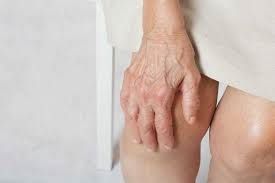
To treat the above conditions, the socks are designed to reduce the diameter of a person’s distended veins. By doing so, venous blood flow is increased, improving valve effectiveness.
The socks also provide the following medical benefits:
- Decreases venous pressure.
- Helps prevent venous stasis.
- Helps prevent the impairment of venous walls.
- Relieves discomfort in swollen or heavy legs.
You Too Can Benefit From Knee-high Pair
Knee-high pressure socks provide many health benefits. Most importantly, these socks can be used to help increase blood circulation. Some patients who are prone to blood clots wear them to prevent clots from forming. They can also be worn to treat ulcers in a person’s lower legs.
ComproGear offers a selection of knee-high socks with a compression level of 20-30 mmHg. Our socks are 35 percent spandex and 65 percent nylon. This gives you a balance between stretch and durability, comfort and quality.
